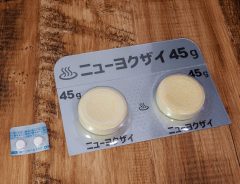
Source: A molecular robot with a width of about 100 micrometers swims when irradiated with light (Photo provided by Yoshiyuki Kageyama, Assistant Professor of Hokkaido University) | Courtesy of © JAPAN Forward
The World’s First Ultra-Small Robot Delivers Medicine through Blood Vessels
- Tags:
- medicine / molecular robot / Robots / ultra-small robot
Related Article
-

An Anime Hologram Assistant That Lives In Your Room And Controls Your Devices
-

Take your bath “medicine” with these cleverly-designed bath tablets by Japanese creator
-

Japanese May Want To Say Sayonara to Stifling Sneezes, Report Reveals
-

Japan’s New Communicative Pet Family Robot Was Born To Love You
-

After maid robot café’s successful trial run in Akihabara, creator looks to the future
-

Japanese convenience store FamilyMart launches medicine pick-up pharmacy service


Medical science is advancing with research pioneered at Hokkaido University on super bots capable of swimming in blood to deliver medicine and perform other microscopic tasks.
Maki Matsuda, JAPAN Forward
A research team at Hokkaido University led by Assistant Professor Yoshiyuki Kageyama announced in 2021 that they have successfully produced a robot smaller than one millimeter that can swim like a fish by paddling through the water. This technology has the potential to be the groundwork for molecular robots that freely swim through blood vessels to transport drugs.
Behind the research lies a certain physical theory.
Nobel Prize in Chemistry
Creating a tiny robot that can fit into narrow spaces like a blood vessel is the stuff of science fiction novels and movies. Research on assembling molecules into tiny machines through chemical reactions is now interesting to scientists worldwide.
For example, the 2016 Nobel Prize in Chemistry was jointly awarded to three people who contributed to the design and synthesis of molecular machinery: Jean-Pierre Sauvage of the University of Strasbourg in France, Sir J. Fraser Stoddart of Northwestern University in the US, and Bernard L. Feringa of the University of Groningen in the Netherlands.
The standard assumption in physics has been that small objects cannot move through water with a fluttering motion. The scallop theorem is a formal expression of the difficulties posed.
For a small robot, forces like gravity and buoyancy proportional to its size are weak, but viscous resistance significantly hinders its smooth movement through liquids. For this reason, if the body of a prospective robot bends to move forward, it will typically return to its previous position within a liquid when it assumes its original shape.
(...)
Written by Japan ForwardThe continuation of this article can be read on the "Japan Forward" site.
The World’s First Ultra-Small Robot Delivers Medicine through Blood Vessels